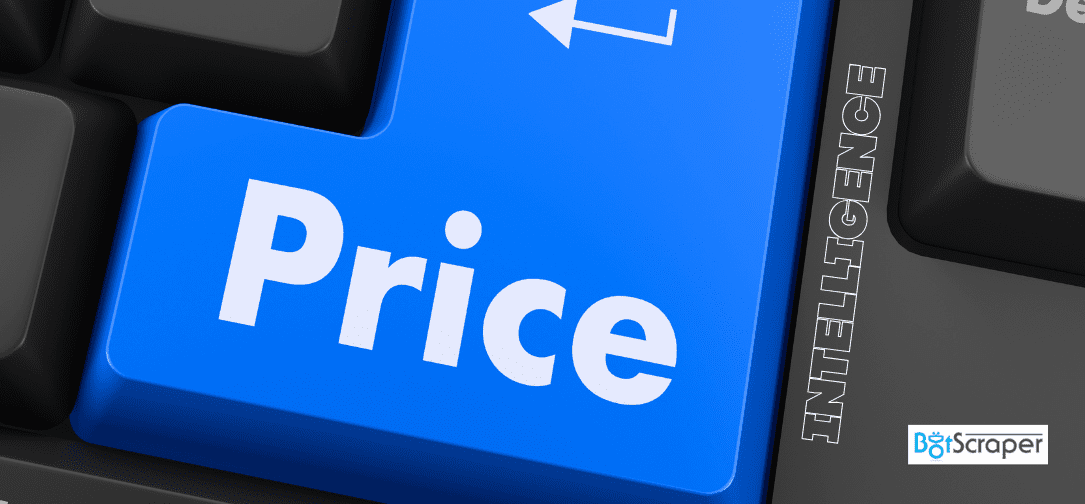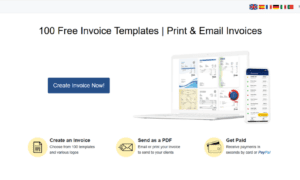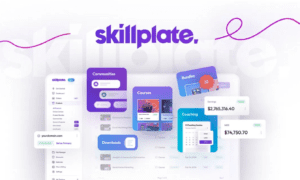Technological advancement and shifting consumer behaviours are reshaping markets at an accelerated pace, pricing is no longer a side note, it has become a strategic fulcrum of business performance. For companies of all sizes and sectors, leveraging a sophisticated pricing approach is essential. Central to that approach is the concept of price intelligence, the systematic process of tracking, analysing and acting on competitor pricing, market demand, product availability and other relevant data to make informed pricing decisions.
In this article, we explore the essence of price intelligence tools, their importance in today’s competitive landscape, the key benefits they deliver and the strategies firms can adopt. We supplement this with current industry facts and future projections, drawing on the latest data and thought-leadership. Our journey will help businesses understand how to move beyond intuition, adopt data-driven pricing, and achieve sustainable competitive advantage.
Defining Price Intelligence and Its Foundations
At its core, a price intelligence tool is a software-driven platform that collects, aggregates and interprets data about competitors’ prices, product availability, promotions, customer behaviour and market trends. According to one recent overview, “price intelligence involves continuously analysing and monitoring market prices, trends and competitor strategies.”
By using techniques such as web scraping services (automated extraction of data from websites), data feeds, APIs and analytics engines, firms can build a real-time or near-real-time view of how the market is behaving. This enables them to respond rapidly to competitor actions, seasonal shifts, supply chain disruptions, promotional campaigns and customer expectations.
As the concept articulates: “As a subset of competitive intelligence, its goal is to assist companies in understanding the effects of market-level pricing complexities and responding in a way that increases profit while maintaining customer interest.”
The evolution of price intelligence reflects the transition from traditional, static pricing (set once and left unchanged for long periods) to dynamic, responsive pricing systems that are powered by data, automation and analytics.
Why Price Intelligence Has Become Vital in the Modern Business Landscape
Price intelligence is no longer a “nice to have”, it is rapidly becoming a business imperative for several reasons:
1) Consumers Are Price-Sensitive and Informed
In today’s digital environment, prospective buyers routinely compare prices across multiple sites before making a purchase. For example, one source notes that 74 % of customers are influenced by price, and that the average customer checks out at least three websites before buying. That means any firm that sets prices based solely on intuition or historic norms risks being undercut by competitors or losing margin unnecessarily.
2) Market Conditions Are More Volatile
Supply chain disruptions, inflation, currency fluctuations, rising logistics costs and promotional cycles all contribute to pricing complexity. Traditional rule-based pricing systems struggle to cope with this volatility. As one major consulting article observes: “Persistent cost inflation, lingering supply chain volatility, ongoing shifts in consumer spending, and intensifying price competition have created a level of complexity that is more than retailers can manage using traditional retail price-setting tools.” Price intelligence tools allow firms to respond faster and more strategically.
3) Digital Commerce and Competition Have Intensified
Online retail enables rapid price shifts, both by you and your competitors. One report states that pricing intelligence has become fundamental for retailers: “Retailers are increasingly interested in implementing pricing intelligence tools because these solutions offer significant strategic advantages that align directly with business goals.” If a competitor lowers a price or launches a promotion, your business must be able to assess and respond quickly, or risk losing market share or margin.
4) The Rise of Data-Driven Decision Making
Organisations are no longer satisfied with making price decisions on gut, experience or static spreadsheets. Instead they expect real-time insights, dashboards and cross-functional collaboration (pricing teams, finance, marketing, product management). The ability to turn data into action is what distinguishes companies today. One article emphasises: “Pricing intelligence is the process of gathering, analysing, and leveraging data on competitors’ pricing to make informed pricing decisions.”
5) Technological Enablers Are Maturing
Advances in artificial intelligence (AI), machine learning (ML), advanced analytics and automation have increased the power and accessibility of price intelligence tools. For example, dynamic pricing and real-time response models are becoming widespread. A recent piece states: “The integration of AI and machine learning in pricing strategies is revolutionising the retail industry, enabling businesses to dynamically adjust prices based on demand, customer behaviour and external factors.”
The Key Benefits of Using Price Intelligence Tools
When implemented effectively, price intelligence tools deliver a number of inter-related business benefits. Here are the most prominent ones:
1) Staying Ahead of the Competition
When you know what your competitors are charging, when they run promotions or when they adjust availability, you can respond proactively rather than reactively. For example, by monitoring competitors’ price intelligence pricing strategy you can swiftly adjust your own, whether by matching, under-cutting, bundling or enhancing your offer. This kind of strategic agility fosters market leadership rather than chasing the lowest price. As one benefit list states: “Competitive insights in real-time… The tool can collect rivals’ data from various websites and then present organised, well-structured insights.”
2) Optimising Your Pricing Strategy
Pricing is a balancing act: set it too high and you lose customers; set it too low and you erode margin. A price intelligence tool helps you pinpoint the “sweet spot”. It allows you to compare yourself to competitors, determine price variations, recognise seasonal patterns and review past pricing information. This optimization can reduce unsold inventory, improve sales volumes and raise profitability.
3) Enhancing Profit Margins
Through better insight, you can identify where to raise price (without reducing volume) or where to discount (without eroding margin unduly). Firms using AI-driven pricing intelligence have seen gross profit increases of 5 % to 10 % from dynamic pricing initiatives. By moving pricing from an art to a science, you unlock margin improvement at scale.
4) Building Customer Trust and Loyalty
Transparent, fair pricing, where customers feel they are getting good value, helps strengthen trust and brand loyalty. If a consumer discovers your price is significantly higher than a competitor they will likely defect. Conversely, when pricing aligns with market expectations, you reduce customer loss and improve repeat purchase behaviour. One benefit list emphasises: “Consumers in today’s world are more aware… If your pricing is more fair and competitive then you can earn more trust.”
5) Supporting Stock and Product Mix Decisions
A price intelligence tool does more than just set the number. It can highlight where your product is being under-cut by rivals, where you have an opportunity to raise price, or where you may need to rethink your product mix. For example, you may decide to renegotiate supplier terms, drop low-margin items or reallocate inventory to faster-moving lines. Effective pricing intelligence helps address unsold inventory, improve operational efficiency and maintain inventory health.
6) Enabling Data-Driven Decision Making
In the age of “big data”, decision-making must be evidence-based. Price intelligence tools collect large volumes of data and present it via dashboards, enabling marketing, sales, product and finance teams to act in synch. As one article states: “Modern price intelligence systems integrate seamlessly with other business tools… ensuring that pricing strategies are not only competitive but also sustainable.”
Strategy and Best Practices for Business Growth
Implementing a price intelligence capability is not just about buying a tool, it is about embedding a process and a mindset. Below are strategic considerations:
Establish a Pricing Centre of Excellence
Success in price intelligence often rests on having a dedicated team or pricing centre of excellence that owns pricing strategy, monitors competitor activity, understands margin pressures and responds rapidly. As one analyst puts it: “Success depends on having a centralised pricing team or centre of excellence, processes to enable quick ‘read and react’ responses, and a fully integrated, automated data platform.”
Integrate Data Across Functions
Ensure that pricing intelligence is connected with inventory management, supply-chain data, promotional calendars, customer segmentation and business objectives. The richer the data sources, the more powerful the insights will be (for example, demand elasticity, seasonality, channel mix). Many failures come from fragmented data and siloed systems.
Decide on Build vs Buy
Organisations must weigh whether to build in-house capabilities or adopt specialised pricing intelligence platforms. Consider factors such as the size of your SKU base, the speed of competition, availability of data science resources and integration with existing systems. Early movers with bespoke systems often gained advantage, but modern cloud-based tools make adoption accessible to many. For example, one forecast shows that the cloud-based segment holds 75.9 % of the competitive intelligence tools market by 2025.
Use Dynamic Pricing Where Appropriate
Pricing should no longer be static. Where competitive intensity or demand volatility is high (for example online retail, FMCG, consumer electronics), dynamic pricing powered by analytics and automation makes sense. One recent article finds that AI-powered solutions allow retailers to adjust prices dynamically by analysing real-time competitive pricing and demand, and that such strategies delivered gross profit improvements of 5 %-10%.
Monitor Ethical and Legal Boundaries
While competitive price monitoring is legitimate, firms must act within legal frameworks (such as avoiding collusion or price-fixing). Web-scraping must respect website terms, data protection regulations and avoid misuse of personal or competitor proprietary information. Ethics and transparency will preserve brand reputation and avoid regulatory danger.
Continuously Review and Iterate
Price intelligence is not a one-off project, it requires continuous monitoring, learning and adjustment. The market evolves, new competitors emerge, cost bases shift and customer behaviours change. Hence your pricing strategy must remain agile.
Industry Facts & Future Projections
To place this in context with current industry facts and future trends:
- The global competitive intelligence tools market (which encompasses pricing intelligence) is estimated to be worth around USD 495.2 million in 2025, with forecasts projecting it to reach USD 1,123.0 million by 2032 – reflecting a CAGR of 12.4 %.
- Other research places the 2024 market size at USD 452.36 million and forecasts USD 1,492.63 million by 2034 (≈ 12.68 % CAGR).
- A prominent analysis of retail pricing tools highlights that switching to AI-powered pricing enabled retailers to increase gross profit by 5 %-10 %.
- In the retail industry, more than 75 % of online purchases are predicted to involve buyers comparing prices across sites.
- AI and machine learning integration in pricing strategies, dynamic pricing, real-time demand shaping and personalised offers, is becoming mainstream for 2025 and beyond.
Given these figures, it is clear that price intelligence is not a marginal play, it is a growth category and a strategic lever, particularly in retail, consumer goods, e-commerce and other dynamic markets.
Looking Ahead: What the Future Holds
Looking ahead to the next five to ten years, several trends will shape the evolution of price intelligence:
- Greater Automation and Real-Time Response: As algorithms become more advanced and compute power grows, price adjustments will occur in real-time, across channels and geographies.
- Personalised and Segment-Based Pricing: Pricing engines will increasingly factor in customer behaviour, loyalty, segment value and purchase history, allowing granular differentiation.
- Integration with Broader Business Systems: Pricing intelligence will link more closely with supply-chain visibility, inventory systems, promotion engines and marketing platforms, creating unified decision-making.
- Broader Adoption Beyond Traditional Retail: While retail has led adoption, sectors such as industrial manufacturing, healthcare, automotive and services will increasingly deploy pricing intelligence tools. One report shows the industrial segment representing 42.2 % share of the competitive intelligence tools market by 2025.
- Ethical, Transparent and Customer-Centred Pricing: With increasing public scrutiny of pricing practices (especially dynamic or surge pricing), firms will need to balance profit with fairness and transparency to maintain brand reputation.
- Global, Multi-Channel, Multi-Currency Complexity: As businesses operate internationally, pricing must account for currency fluctuations, local competitor pricing, cross-border promotions and channel-specific dynamics, making intelligence tools even more important.
In sum, the firms that treat pricing as a strategic discipline rather than a tactical after-thought will enjoy meaningful advantages in margin, agility and customer trust.
Conclusion
No one underestimates the importance of price intelligence in modern digital business. For organisations seeking to build sustainable value, pricing is a vital instrument of growth, competitiveness and profitability. Price intelligence tools allow businesses to elevate pricing from an “art” to a science, fuelled by data, automation and insight.
Looking at the demanding digital commerce market, global competition and ever-changing customer expectation, relying on outdated methods or gut instinct will leave you behind. As we have explored, price intelligence provides the foundation for smarter decisions: understanding competitor behaviour, optimising your pricing structure, protecting margins and nurturing customer loyalty.
For your digital media business, or any business operating in a fast-moving market, the message is clear: Treat pricing as a discipline, invest in tools and processes, align cross-functional teams and move at speed. By doing so, you will not only defend your position but create competitive advantage. Implementing a price intelligence tool is a strategic step towards transforming pricing from cost centre to growth engine.



































